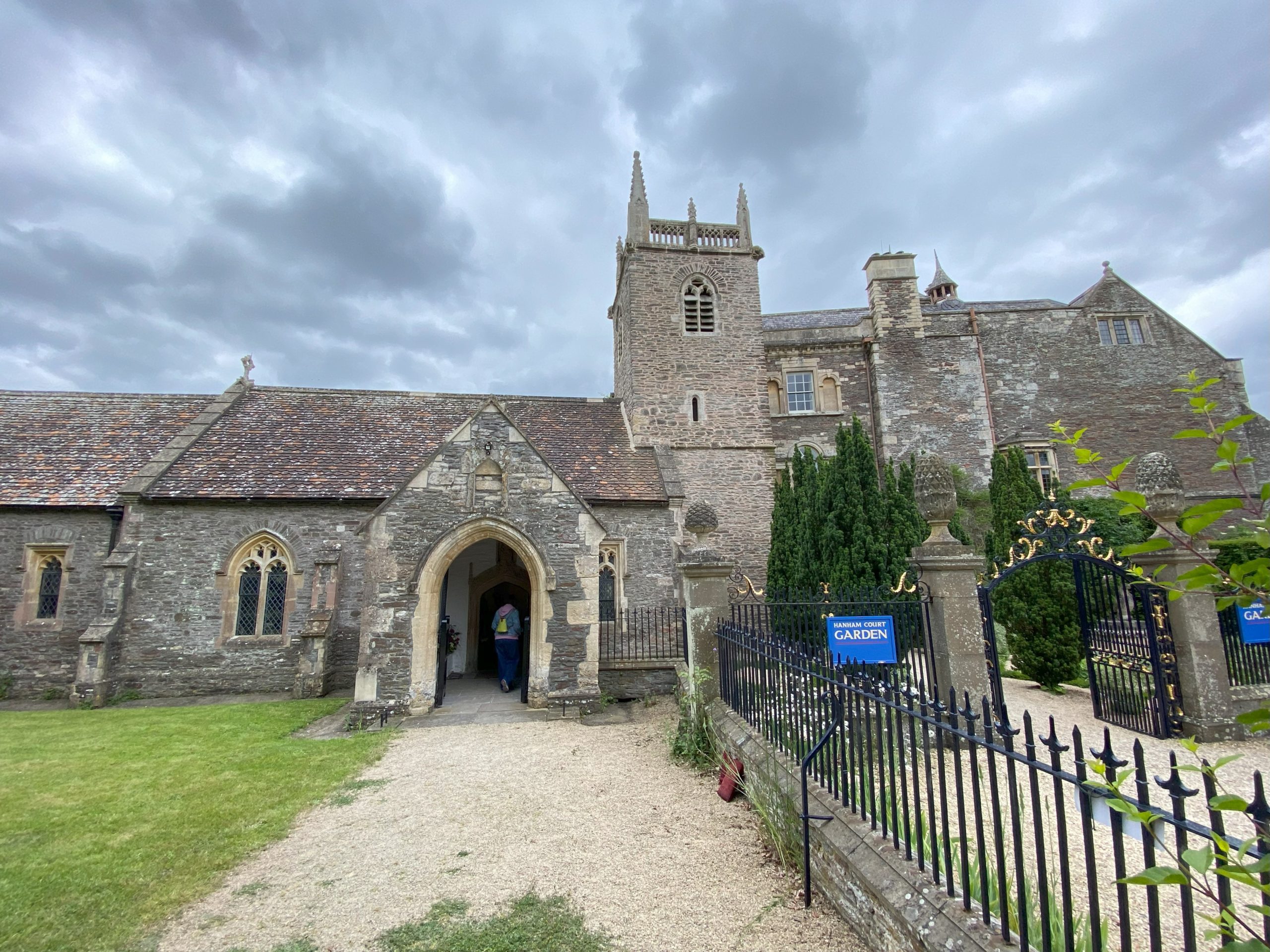
After an afternoon spent in the sunny gardens, musing on the misadventures of Francis Creswicke, it was an unexpected bonus to find that St George, Hanham Abbots, which is attached to Hanham Court, was also open to visitors. The church is one of the two former “chapelries” of Bitton, the other known as Oldland, which served the needs of those who lived in these distant parts of the old “Kingswood Chase” between the Reformation and the 19th century. Bitton, though still a parish, is a village nowadays, but once its responsibilities covered a wide area, as far as Pucklechurch in one direction, Stapleton in another and until the 1750s, to that part of east Bristol, formerly in Gloucestershire, which became the suburb, now known (confusingly) as St George. The H & O chapelries shared one parish register where my paternal family make regular appearances. Nathaniel, the first-born child of my ancestors, John and Katherine Pillinger, nee Lear, who was christened on 29 November 1761, was “of Oldland”, though his sister Sarah born two years later was “of Hanham”.
It is hard to believe that before this day I had never been inside the ancient Hanham Abbots church, despite many years in Bristol Archives staring at the “H & O” register. My husband and son, George and Kevin had a good look round before finding a seat outside to enjoy the summer promise, whilst I had a tete a tete with kindred spirits, the friendly church volunteers. In such circumstances I can become over-exuberant, and I hope I was not too much on this occasion. One of them, Alison, reminded me that “before the lockdown” of 2020 stopped such jollies, I had been booked to talk to their group about coal miners, or Pillingers, or anything else which might have been my flavour of the moment. The talk unfortunately never took place, and I’ve now retired from outside engagements, due to decrepitude, but I promised to write a blog about my birthday visit instead. So, after a delay due to the old excuse, “circumstances beyond my control”, this is it.
The “Abbots” denote their origins, Keynsham Abbey, a monastic house of Augustinian Canons at whose head was an Abbot. In 1330 the Order purchased Hanham Court and by 1350 the church was added where resident monks and lay people could worship. The Tithe Barn where tenants of the Abbey lands paid their dues in kind, dates from the 15th century. In return the monks provided spiritual, charitable and health services to the poor and needy, and to travellers. When the monasteries were dissolved by the Act of Supremacy, the last Abbot, John Stourton, or Staunton, surrendered the keys to Henry VIII’s agent and led his brethren in solemn procession up a nearby hill where, according to legend, he uttered the curse upon Hanham Court to which the Rev Ellacombe attributed the misfortunes of the Creswicke family.[1]
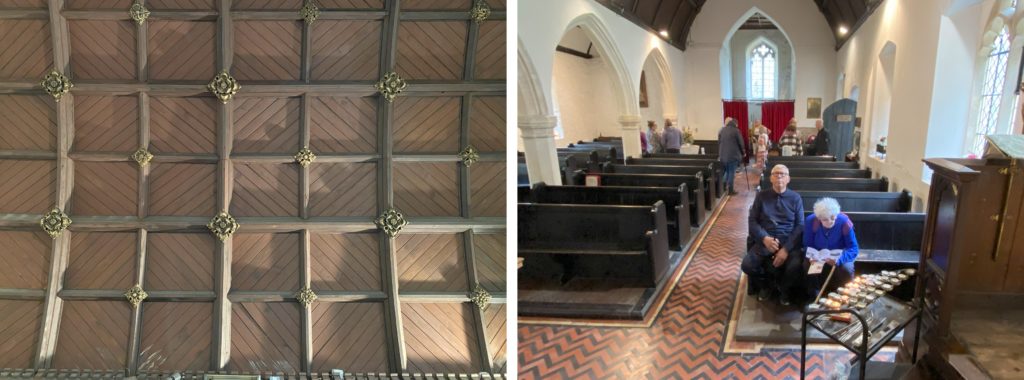
George in contempIation, DPL, nose down, always researching.
Pre-Reformation, the monks may have gone to pray through a door, visible in the Court grounds, leading to the Lady Chapel, (now the Vestry), though the exit inside the church is plastered over, just as the frescos would have been. The Norman Font and Piscine were seemingly cast offs of the Abbey HQ at Keynsham. Otherwise, what the iconoclasts didn’t despoil, was altered in the 17th and 18th centuries, and in the 19th, the Victorians obviously undertook “modernisation”. The roof is striking, likewise the stately arched pillars. Does their placement indicate the church’s former width?
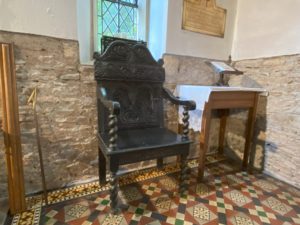 There are interesting artefacts to be seen like the “Bishop’s Chair”, in the Sanctuary, dated 1616, and a reproduction of the “Glastonbury Chair” with markings in old script praying for the soul of one John, a monk of Glastonbury, copied from an original of 1504.
There are interesting artefacts to be seen like the “Bishop’s Chair”, in the Sanctuary, dated 1616, and a reproduction of the “Glastonbury Chair” with markings in old script praying for the soul of one John, a monk of Glastonbury, copied from an original of 1504.
A board by the door records two charitable bequests.
In 1656 Mrs Elizabeth Warne from a local family left 10 shillings for a sermon to be preached on 1st April each year plus the same amount for the poor of East Hanham. The Trust is still active.[2]
In his will of 1697, Richard Jones, esquire, left £4 per annum, also to the Hanham poor. Richard was summoned to the Heralds’ Visitations of 1682-3 along with Francis Creswicke, Sir Richard Hart and Sir John Newton. He and his wife are recorded “against the south wall” in the mother church of St Mary’s, Bitton:
“Near this Place lyeth the Body of Alice the wife of Richard Jones, of Hanham, Esq……Likewise, the Body of Richard Jones, of Hanham, Esq, who died January 17, 1697, aged 87 years.” [3]
A reminder of antiquity is the small window in the back wall through which any infirm or sick monks could see and hear Mass. Below it hangs a painting of St John “by Pearsall of Willsbridge”, which set off dings in my head.
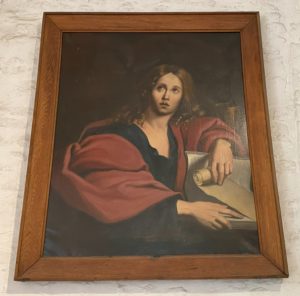 Straightaway, I was twelve years old again. Eric Hilton, the patent-leather haired music master at Kingswood Grammar School flapped raven-like in his black academic gown, while cawing his trademark “taffa-teffi-taffa-teffi-ta-ta-ta” with which chant the class dutifully joined, fingers of one hand, tapping on the palm of the other in lieu of instruments. That, and enforced listening in silence to Eric’s records of “tone poems” put me off “serious music” for four decades until Kevin led me back on track. But “Pearsall” equalled “Madrigals” and Eric often mentioned the man and his music. I may even have heard a madrigal in class.
Straightaway, I was twelve years old again. Eric Hilton, the patent-leather haired music master at Kingswood Grammar School flapped raven-like in his black academic gown, while cawing his trademark “taffa-teffi-taffa-teffi-ta-ta-ta” with which chant the class dutifully joined, fingers of one hand, tapping on the palm of the other in lieu of instruments. That, and enforced listening in silence to Eric’s records of “tone poems” put me off “serious music” for four decades until Kevin led me back on track. But “Pearsall” equalled “Madrigals” and Eric often mentioned the man and his music. I may even have heard a madrigal in class.
The second part “of Willsbridge”, was even more whimsical. By 1953 when I were still but a lass, I had exchanged KGS for Frys’ workers’ bus, (not an improvement for all I belly-ache about my school days). I was en route to my loathed job banging a monstrous machine called an Addressograph, whilst forcibly clad in a uniform, horrid, vile green, foul green, slime green, overall tied up with a belt round the middle. (Discrimination on two counts. Scoliotics are uncomfortable with belts. And boys doing the same job did not have to wear overalls.)[4]
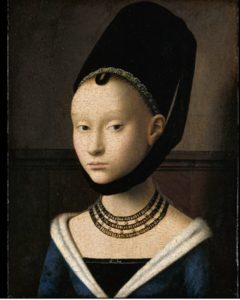
An example. Not a 20th century face. This girl looks as if she was being forced into a marriage not of her choosing. (Portrait of a young girl. Petrus Christus, c1460)
At about eight each morning, the bus always stopped to collect a few more chattering slaves by the glowering edifice colloquially known as “Willsbridge Castle”. Across the other side of the road a girl of my age or a bit older was usually standing, waiting for a bus going in the opposite direction. She had an “old face”, serious, long and pale, light hair drawn back under a hat of some kind. Not old as in years, but old historically. She did not belong in the 20th century. I thought that “the Castle” must be her home, that she was a Mediaeval princess who might need rescuing from a dragon. I always made up these stories but didn’t know what to do with them.
Too soon the conductor shouted, “No standing up top”, rang the bell, and there was no longer any escape from the hours of misery ahead. When I left Frys’ after a few dismal months, the supervisor said in triumph, all the world as if she had coined the cliché: “You are a square peg in a round hole!” How did she guess?
As to “Pearsall of Willsbridge”, you could call him “Local Boy Made Good”, though he spent only a limited time in Willsbridge with much of the rest of his life lived in Germany or Switzerland. He was a composer of note, mostly of vocal music, of which In Dulci Jubilo, based on a German traditional carol, is often played at Christmas. Robert Lucas Pearsall who was born in 1795 in Clifton became connected with Willsbridge when his mother, Elizabeth, nee Lucas, bought the house from her brother-in-law Thomas Pearsall, the former proprietor of the iron mill which had failed after a hundred years in operation. Robert married Harriet Eliza Hobday in I817 at Holborn, London. They had four
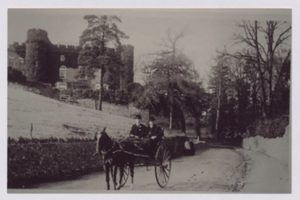
Willsbridge Castle, earlier than in my time, but much the same view as I had from the Frys’ bus.
children, John Still Tyrell, baptised at St Marylebone, in 1818, his father stated as being “of Willsbridge”. Already the “of” suggests a hint of grandeur though no-one in London would have known where Willsbridge happened to be. Sadly, the couple lost the little boy at just two years old. He was buried at St Peter’s, Bristol on 7 September 1820, just six weeks before Harriet gave birth to his brother, Robert Lucas, junior, on 23rd October that year. Four days later the baby was christened at St Anne’s, Oldland, the new parish church, his father identified as “a gentleman, of Willsbridge House, Oldland”. Two daughters followed, Elizabeth Still, born 8 March 1822 and Phillipa Swinnerton, 6 February 1824, both baptised at Oldland a month or so after their respective births. In 1825 Robert took his young family to Karlsruhe in Germany and then between 1830 and 1842 they lived at Mainz. Pearsall’s last visits to Willsbridge were in 1836 – 37, possibly coinciding with his mother’s frailty; she died in 1837. The same period covered the foundation and inaugural meetings of Bristol Madrigal Society, for which Pearsall composed some of his early works. The success of these pieces led to others, like “Sir Patrick Spens” with parts for ten voices, sung, a Capello, “Great God of Love (eight parts) and the well-known “Lay a Garland”.
By 1842, Robert and Harriet Eliza had separated. By all accounts the proceeds from the sale of Willsbridge House enabled him to buy Wartensee Castle in Switzerland where he lived until his death, aged 61, in August 1856.

Robert Lucas Pearsall,1795-1856. Like many another “silent woman” Harriet Pearsall has gone to ground.
I have not found anything (other than “St John”) to suggest that Robert Pearsall was a painter as well as a composer. (I am open to correction.) Harriet Eliza was the daughter of a portrait painter called William Armfield Hobday. Coincidence? The suggested date of the painting in Hanham Abbots attributed to “Pearsall of Willsbridge” is 1820 when Harriet lived there with Robert and their two sons. So, there were two Pearsalls of Willsbridge at the time, one of whom might have learned portraiture at her father’s knee. Just saying……..
….
Vespers: On returning home that evening, I found an email in my in-box from a lady called Nadia who, by coincidence had also been in St George, Hanham Abbots that same afternoon, though our paths did not cross. Nadia wanted to know the whereabouts of the churchyard. She is looking for the gravestone of “the prodigy”, John Henderson, who died in 1787. Much to John Wesley’s chagrin Henderson “wasted his great and good talents” leading the student life at Oxford “and in two and thirty years [has] done just nothing.”
Unfortunately, Nadia fell into the trap of “the wrong St George”. As far as I know there are no gravestones (and precious few burials recorded in antiquity) at St George, Hanham Abbots. John Henderson was not buried there but at the “other” St George in east Bristol, but Nadia would not find his actual gravestone there either as this church was demolished in 1976. I told you “Kingswood” was complicated! [5]
Altogether, the day was a most satisfactory start to my birthday week.
Footnotes
[1] see previous blog: “Francis Creswicke, an old friend: visiting Hanham Court Gardens Open Day, 9 June 2024.”
[2] For which see the Charity Commission website. NB. Not “Warner” as in the church leaflet, but WARNE. Members of the Warne family are listed in the Kingswood Index. and of course the Parish Register. Elizabeth may be the widow of Anthony Warne, collier of Oldland, whose will, dated 1627 is at Glos. Record Office.
[3] Bigland, Ralph: “Historical and Monumental Collections of the County of Gloucester”, 1786. (Ed. Brian Frith.)
[4] J. S. Fry & Sons, Somerdale (i.e. Keynsham), chocolate factory, mourned by many, but not by me.
[5] For John Henderson, see The Annals of Kingswood Vol II, 1776-1795
Notes:
I have used https://richardswex.co.uk/fam1011.html for some family information about the Pearsalls, acknowledged with thanks, which includes the gem that Robert also liked to be known as “Pearsall de Willsbridge”! Thanks also to Julie Mather-Johns and Doug Crew of Hanham History Society.
To anyone interested in the Dissolution period, I recommend the novel “Dissolution” by the late C.J. Sansom, which has a cracking murder mystery into the bargain.


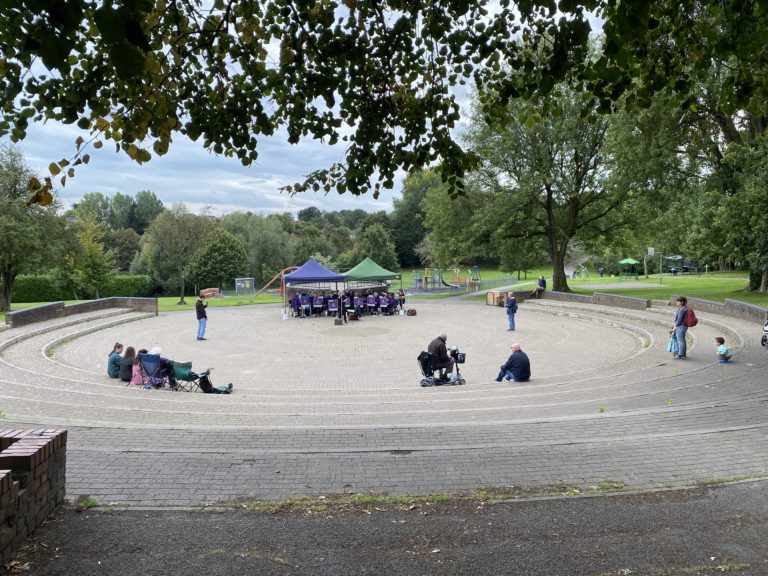
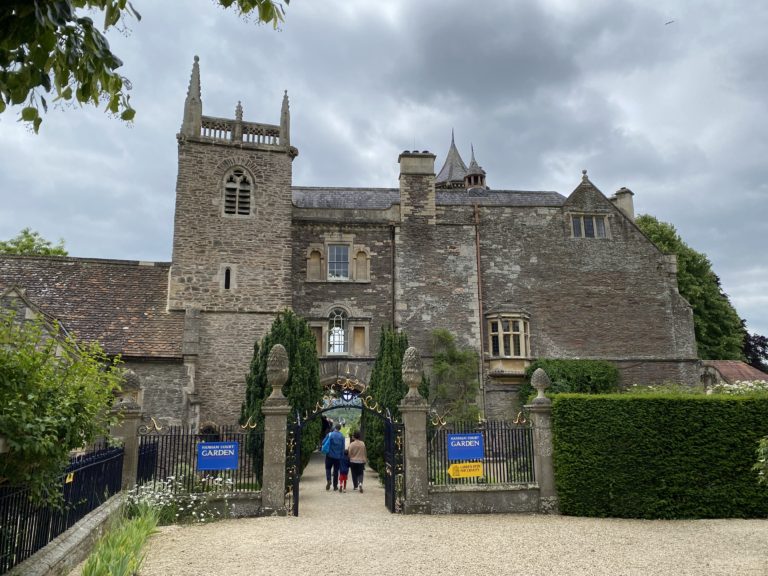
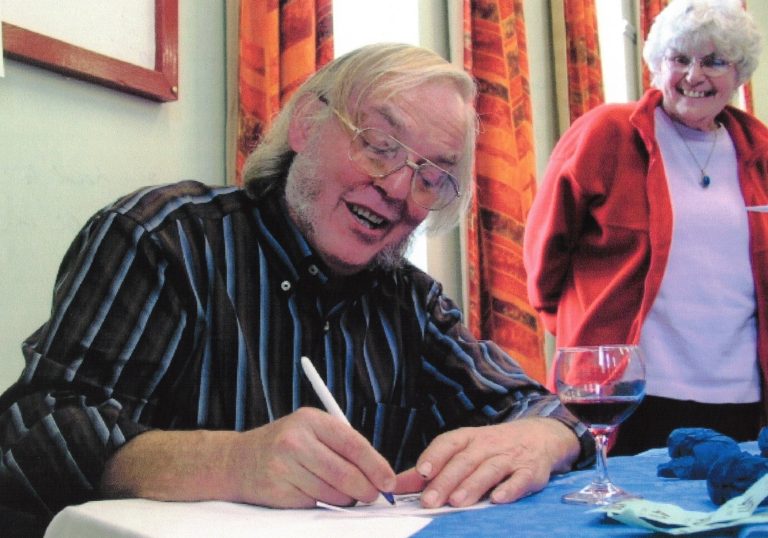
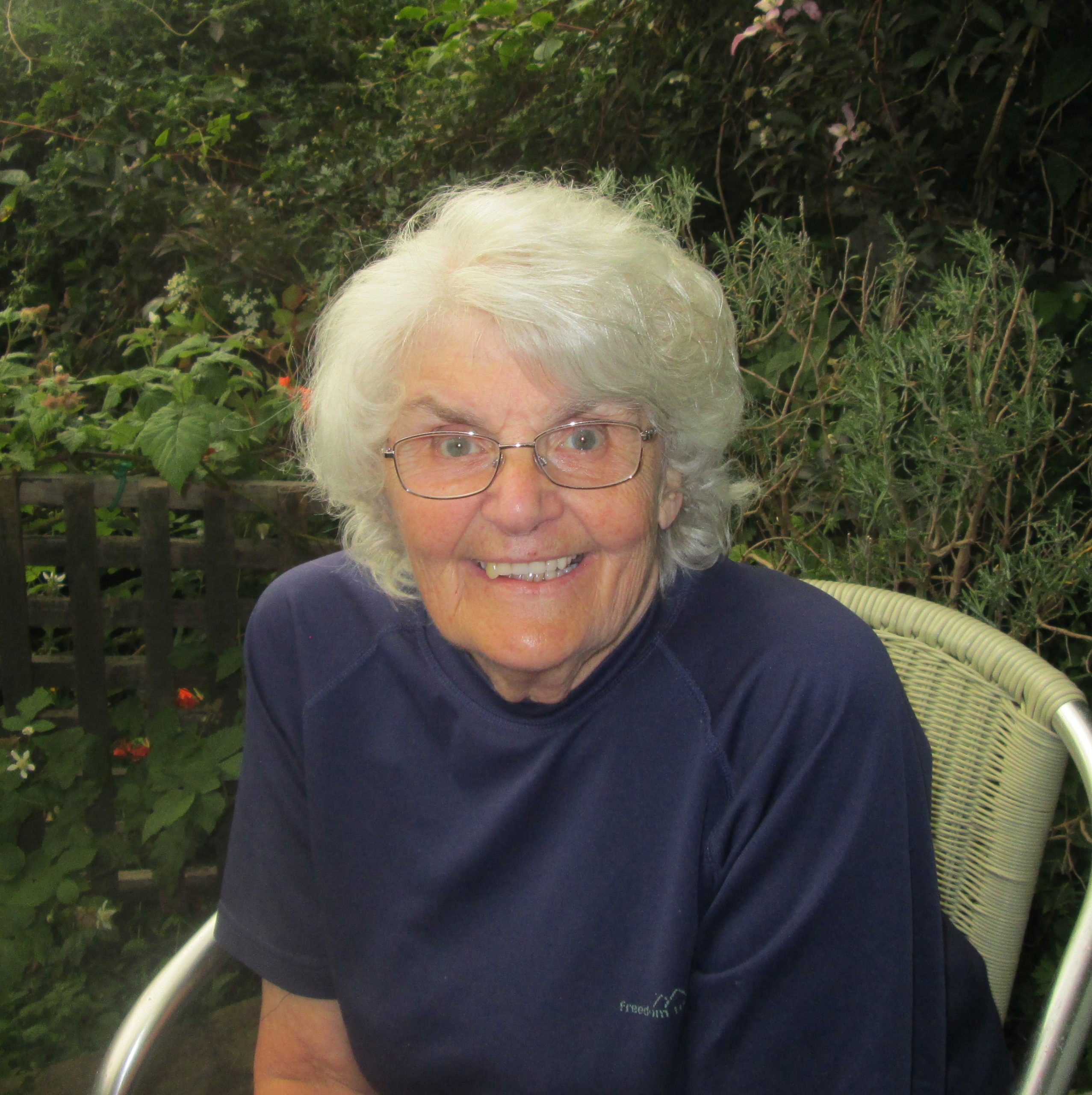




Blog Comments
Billie Oliver
23rd November 2024 at 2:11 pm
I would like to follow your posts but I can’t find a way to do that easily (without remembering to look up your website regularly). Do you have a subscriber list?
dp lindegaard
31st December 2024 at 5:22 pm
Hi Billie,
Thanks for the suggestion and it’s really pleasing that you like the content on the website. This is Kevin, Doreen’s son. Having a subscriber list and Mailchimp enewsletter is something that we would like to do at some stage but as I do all Mum’s IT for her (as well as my own!) it remains on the to do /wish list.
Best wishes, Kevin